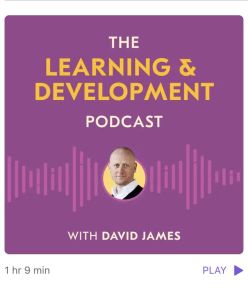Melden Sie sich bei getAbstract an, um die Zusammenfassung zu erhalten.

Melden Sie sich bei getAbstract an, um die Zusammenfassung zu erhalten.
Donald Clark and David James
The Potential of Generative AI for L&D With Donald Clark
Looop, 2023
Was ist drin?
Discover how generative AI is reshaping the learning and development field.
Recommendation
In this episode of The Learning and Development Podcast, host David James discusses the transformative potential of generative AI on learning and development with L&D expert Donald Clark. James and Clark emphasize how AI is already helping L&D professionals adopt a more personalized, bottom-up approach to learning and how it will continue to challenge traditional course-based methods. Clark argues that L&D teams should enthusiastically embrace the power of generative AI to enhance learning, productivity and overall effectiveness.
Summary
About the Podcast
Host David James is the chief learning strategist at Looop and guest Donald Clark is an EdTech entrepreneur, CEO and professor.


























Comment on this summary